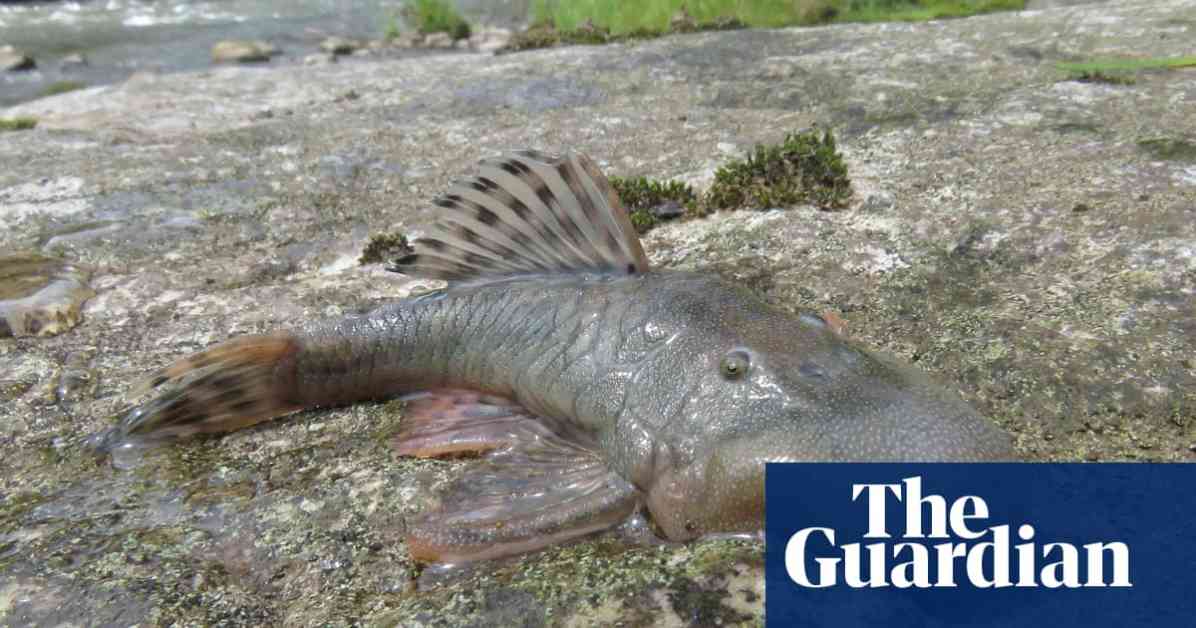27 New Species Discovered in Peru Expedition: Blob-Headed Fish & Amphibious Mouse
In a groundbreaking expedition led by Dr. Trond Larsen in the Alto Mayo region of north-west Peru, researchers have uncovered 27 species previously unknown to science. Among these discoveries are a rare amphibious mouse, a tree-climbing salamander, and an intriguing “blob-headed fish”. This 38-day survey meticulously documented over 2,000 species of wildlife and plants, shedding light on the region’s biodiversity in the face of mounting human pressures such as deforestation and agriculture.
The Thrilling Discoveries
One of the most remarkable findings of this expedition is a new species of amphibious mouse, a unique creature belonging to a group of semi-aquatic rodents that are incredibly rare. Dr. Larsen expressed his shock and excitement at this discovery, highlighting the challenges in locating these elusive creatures due to their mythical status among mammal experts. The expedition also unveiled a dwarf squirrel, known for its speed and small size, making it a challenging sight in the dense rainforest. The Enigmatic Blob-Headed Fish
Perhaps the most mysterious find of all was the “blob-headed fish,” a species with a peculiar extension on its head that defies explanation. Dr. Larsen speculated on the potential functions of this blob, suggesting it could be linked to sensory organs, buoyancy control, or even foraging strategies. The discovery of this enigmatic fish adds a layer of intrigue to the already fascinating array of new species uncovered during the survey. Conservation Implications and Indigenous Knowledge
The expedition not only highlighted the rich biodiversity of the Alto Mayo landscape but also underscored the importance of conservation efforts in the face of increasing human activities. By working closely with Indigenous communities like the Awajún people, researchers were able to tap into traditional knowledge that has long coexisted with these unique species. Yulisa Tuwi, an Awajún community member, emphasized the value of their ancestral knowledge, bridging the gap between scientific discoveries and Indigenous wisdom.
Perhaps the most mysterious find of all was the “blob-headed fish,” a species with a peculiar extension on its head that defies explanation. Dr. Larsen speculated on the potential functions of this blob, suggesting it could be linked to sensory organs, buoyancy control, or even foraging strategies. The discovery of this enigmatic fish adds a layer of intrigue to the already fascinating array of new species uncovered during the survey.
Conservation Implications and Indigenous Knowledge
The expedition not only highlighted the rich biodiversity of the Alto Mayo landscape but also underscored the importance of conservation efforts in the face of increasing human activities. By working closely with Indigenous communities like the Awajún people, researchers were able to tap into traditional knowledge that has long coexisted with these unique species. Yulisa Tuwi, an Awajún community member, emphasized the value of their ancestral knowledge, bridging the gap between scientific discoveries and Indigenous wisdom.
As we marvel at the wonders of nature revealed through this groundbreaking expedition, it becomes clear that our actions today will shape the future of these newly discovered species. By integrating local knowledge with scientific expertise, we can pave the way for conservation initiatives that protect these treasures for generations to come. Let’s cherish these discoveries as a testament to the beauty and diversity of our natural world, inspiring us to become better stewards of our planet.














